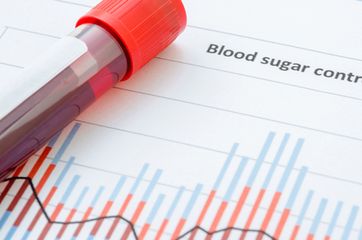Stress from food insecurity tied to worse glycemic control in adults with type 2 diabetes
A cohort of low-income Latino adults with type 2 diabetes and food insecurity had higher insulin resistance than similar adults who were considered food-secure, with the association mediated by stress hormones, according to findings published in The Journal of Nutrition.

“There have been publications in the past that documented that food insecurity does affect the way people eat; however, this is one of the few studies out there that demonstrates that the relationship between food insecurity and insulin resistance is mediated by stress,” Angela Bermudez-Millan, PhD, MPH, assistant professor of community medicine and health care at the University of Connecticut School of Medicine, told Endocrine Today. “It means that these people are really stressed, and that all of the social determinants of health — and food insecurity is one of them — play a role in this.”
Bermudez-Millan and colleagues analyzed data from 121 Spanish-speaking Hispanic or Latino adults with type 2 diabetes with an HbA1c of at least 8% who were recruited from an outpatient clinic at Hartford Hospital that serves a low-income population (mean age, 61 years; 74% women; 85.8% Puerto Rican). Participants provided urine and blood samples and completed the six-item U.S. Household Food Security Survey, with higher scores indicating greater food insecurity. Researchers measured serum insulin, homeostatic model assessment of insulin resistance (HOMA-IR) and levels of stress hormones, including urinary cortisol, metanephrine and normetanephrine.
Within the cohort, 82 participants (68%) responded “yes” to at least one survey question and were classified as food-insecure. Of these, 23 adults responded “yes” to all six questions.
When compared with food-secure participants, those who were food-insecure had higher concentrations of total cholesterol (P = .004), high-sensitivity C-reactive protein (P = .008), cortisol (P = .045), insulin (P = .019), glucose (P < .001) and insulin resistance measured by HOMA-IR (P = .001). The researchers also found that waist-to-hip ratio was higher among adults with food insecurity when compared with those who were classified as food-secure (P = .058). There were no between-group differences in HbA1c, metanephrine, normetanephrine, HDL cholesterol, LDL cholesterol or triglyceride levels.

In a multiple mediation model, researchers found a “significant direct effect” of food insecurity on cortisol (P = .011) and high-sensitivity C-reactive protein (P = .02), whereas cortisol and high-sensitivity C-reactive protein exerted direct effects on HOMA-IR, with P values of .013 and .044, respectively.
“It is important to assess for food insecurity in communities in distress,” Bermudez-Millan said. “It is an important independent variable that can impact the results of studies.”
Bermudez-Millan said the findings show there must be more intraprofessional collaboration among providers in at-risk communities.
“There must be more of a connection between the community health workers and clinicians, who should be measuring food insecurity,” Bermudez-Millan said. “It’s asking questions like, ‘Are you worried about running out of food before the end of the month?’ Patients are often referred to a certified diabetes educator or a nutritionist, but they are not referred to a social worker.” – by Regina Schaffer
For more information:
Angela Bermudez-Millan , PhD, MPH , can be reached at the University of Connecticut Health Center, School of Dental Medicine, Division of Behavioral Sciences and Community Health, Oral Health and Diagnostic Sciences, 263 Farmington Ave., MC 3910, Farmington, CT 06030-3910; email: Bermudez-millan@uchc.edu.
Disclosures: This study was a collaboration between the University of Connecticut School of Medicine, University of Connecticut School of Dental Medicine, Yale University, Hartford Hospital, Quinnipiac University and the Hispanic Health Council. The authors report no relevant financial disclosures.

